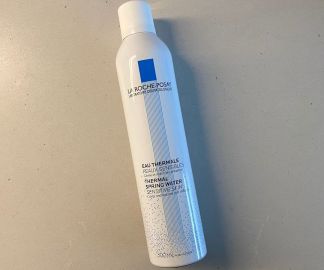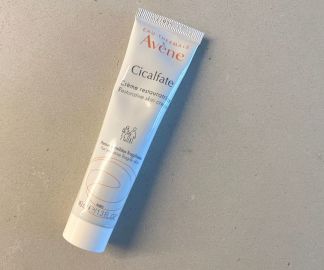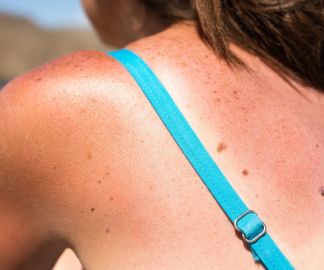If skin cancer isn't enough to put you off taking the risk, Dr Gunatheesan also pointed out sunburn can also contribute to premature ageing (lines, wrinkles, age spots and sagging).
Sunburn doesn't always look super red and angry, though. Anecdotally, I personally find sunburn can adversely affect the look and feel of the skin on my face.
In the past, I’ve experienced a waxy feeling, bumpy texture and breakouts (likely due to the inflammation) after even a small amount of sunburn. Because of this, foundation doesn’t seem to play well either.
Sunburn Treatments - Here's What to Do.
If the unspeakable has happened, your best bet is to spend less time hating yourself and more time putting moisture and nourishment back into your skin.
Here are some recommendations from both Dr Gunatheesan and myself:
1. Stay Cool and Hydrated.
If you've been sunburnt, it’s important to stay properly hydrated, take quick, cool showers and pat the skin gently dry (don’t vigorously rub or you’ll irritate it further).
Dr Gunatheesan likes the idea of a cold Greek yoghurt mask with a crushed baby aspirin to reduce some of the inflammation, too.
IMPORTANT: If the sunburn is really painful, swollen or severe, check in with your GP or dermatologist.
2. Stop Using Active Skincare Products.
If you use active skincare products like peels, anti-ageing serums or exfoliants, you might need to pull back.
Dr Gunatheesan’s advice is to stay away from topical retinoids, alpha and beta hydroxy acids, as well as botanicals or fragrances that can make the skin even more sensitive to the sun.
Instead, she suggests using a cream or serum rich in vitamin B3, vitamin C and vitamin E, or other cooling ingredients include aloe vera, cucumber and menthol.
Coming from someone who's been there, I swear by the combination of La Roche-Posay Thermal Spring Water Mist and Avène Cicalfate Restorative Skin Cream for a face that's seen too much sun. .




The mist is very gentle and can be kept in the fridge. Spritz throughout the day to relieve that uncomfortable hot feeling you get when you've been burnt.
The Cicalfate moisturiser contains copper sulfate and zinc sulfate to help limit the risk of bacterial proliferation and restore the skin’s barrier. It feels super nourishing and calming as well. I’d gently tap it all over my face, neck and chest (but don’t use it if your skin is blistered or broken). It's the best cream for sunburn, trust me.
If it’s your body that’s been burnt, Dr Gunatheesan suggests a soothing menthol-based moisturiser post-shower, before layering over some coconut oil to trap in the moisture.
3. Find Sunscreens You Actually Like So This Won't Happen Again.
While you're sitting there spritzing your thermal spring water mist and wondering why you thought sunbaking was glam, remember: prevention is always better.
The answer? Finding a broad spectrum sunscreen you like with a minimum of SPF30+ but ideally SPF50+, and wearing it every single day.
Ultra Violette Supreme Screen SPF 50+ Hydrating Facial Sunscreen is light, hydrating like a moisturiser and offers broad spectrum protection. Apply this every morning just like you would any other skincare product.


For body, try Ultra Violette Extreme Screen Body & Hand Sunscreen SPF50+ 150ml - it sinks in quickly and leaves a sheen that’s not at all sticky. It also gives the skin the finish of a shimmery body lotion.
Dr Gunatheesan says not to forget applying sunscreen to your ears, chest, neck and hands, too. Also, reapply every three hours when outdoors, or more frequently if you’ve been sweating or swimming.
Finally, don’t forget a wide-brimmed hat, enveloping sunglasses and long-sleeved, ideally UPF 50+ woven clothing. And this might be an obvious one, but seek out shade whenever you can.
If anyone asks why you're lounging under a leafy tree instead of sprawled out on the sand like an egg in a fry pan, tell them shade is chic, OK?











